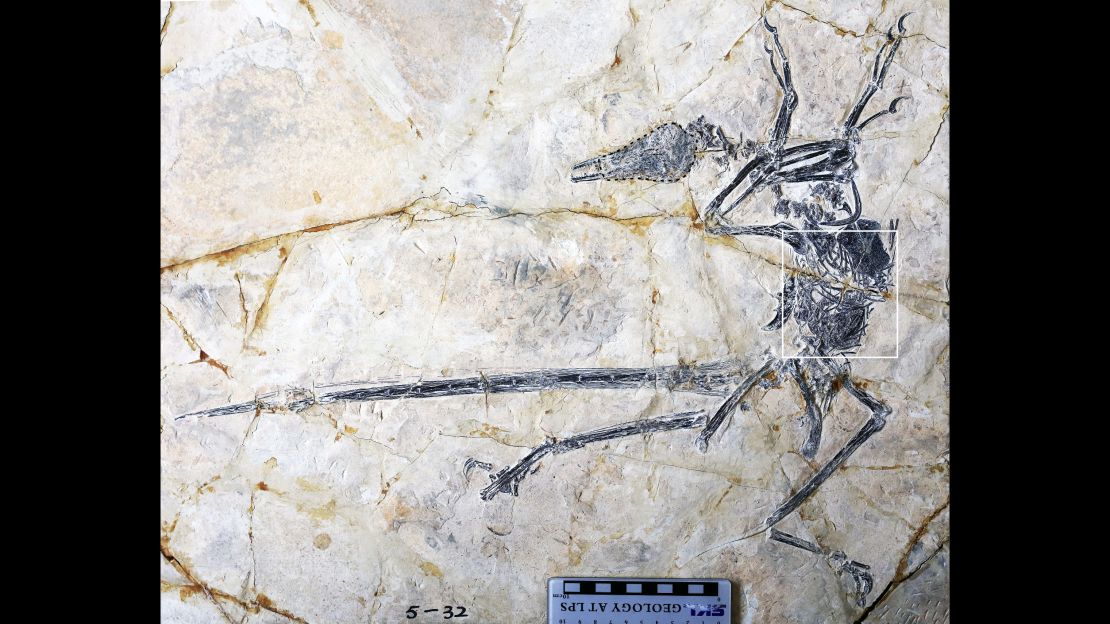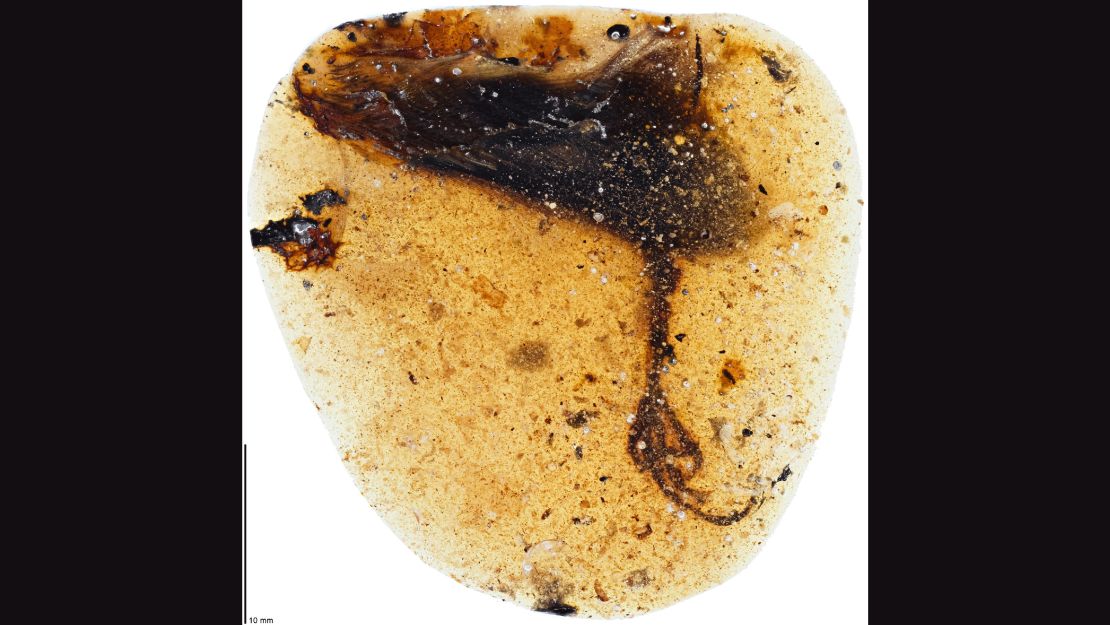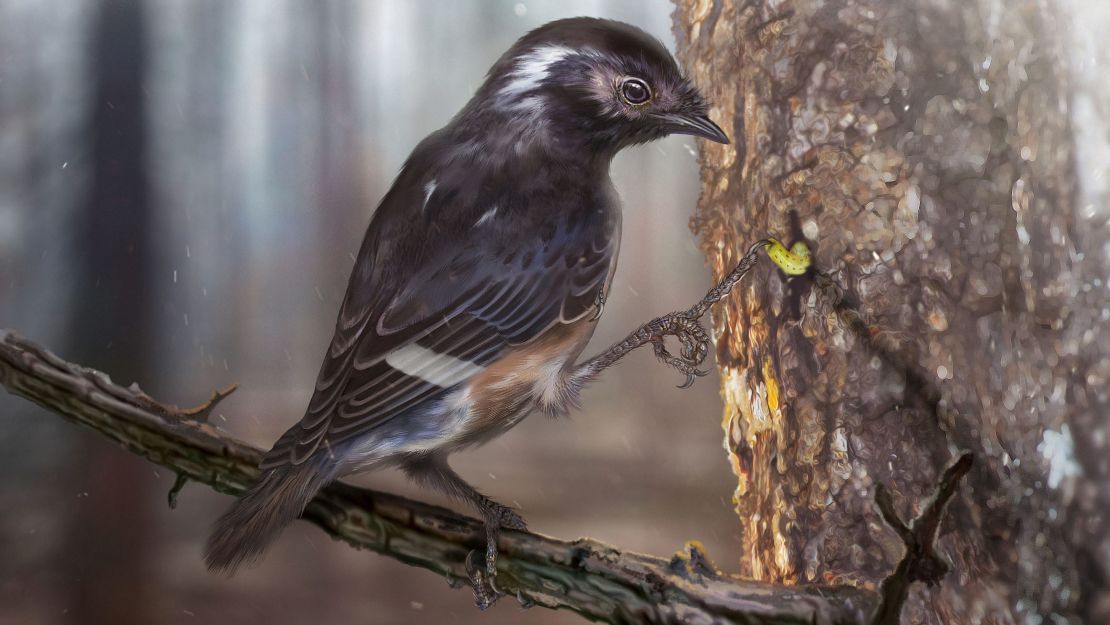The fossil record isn’t always kind to preserving the existence of smaller creatures. But this week, scientists announced the discovery of two previously unknown species in two separate studies published in the journal Current Biology.
We know about both thanks to different methods of preservation.
In one study, a new species of lizard was found perfectly preserved in the stomach of a Microraptor. In the other, a bird foot with an unusually long toe was discovered trapped in amber.
Down the hatch
Sometime during the Cretaceous period about 122 million years ago, a Microraptor found itself a tasty treat: an unsuspecting lizard that it swallowed whole.
The lizard went in head-first and landed in the Microraptor’s stomach. And it’s still there.
Paleontologists at the Chinese Academy of Sciences discovered it when they uncovered a new specimen of Microraptor zhaoianus. Microraptors were small feathered dinosaurs that resembled birds. The name translates to “tiny plunderer.”
They weren’t expecting to find a nearly complete lizard within the dinosaur’s stomach. After studying it, they realized that it was unlike any other lizard known from the Cretaceous period. They named it Indrasaurus wangi.
Indrasaurus refers to the Vedic legend of the god Indra, who was swallowed by a dragon during battle. In this case, the dragon is the Microraptor.

Wangi is in honor of Professor Wang Yuan of the Institute of Vertebrate Paleontology and Paleoanthropology at the Chinese Academy of Sciences. Wang is also director of the Paleozoological Museum of China and has overseen many Chinese fossil exhibitions.
The two fossils were found in the Jehol Biota, an area in northeastern China full of exceptionally preserved fossil discoveries like feathered dinosaurs that has been studied for the past 90 years.
All known lizards from the Cretaceous period are closely related to each other, and more than to modern lizards. But this lizard’s teeth are completely different from those of any previously found in this area, which broadens the diversity of species known to have lived at the site.
It’s also the fourth time scientists have found a Microraptor with preserved remains in its stomach, showing that it had a diet of mammals, fish and now lizards. The fact that the Microraptor ate the lizard head-first is similar to the way modern carnivorous birds eat.
Over the past 20 years, scientists have identified 20 predator and prey relationships through stomach contents at the site.
What long toes you have
About 99 million years ago during the Cretaceous period, a bird foot was preserved in amber. And it happens to show that this particular ancient bird had a third toe that was longer than its lower leg.
Why would it need such a long toe? Researchers believe that the bird used it to hook and pull insects from trees. And it’s the first instance of a foot structure like this ever seen in birds, living or extinct.
“I was very surprised when I saw the amber,” said study author Lida Xing of the China University of Geosciences in Beijing. “It shows that ancient birds were way more diverse than we thought. They had evolved many different features to adapt to their environments.”
The researchers created a 3D reconstruction of the foot after using micro-CT to scan the amber. The third toe was found to be 9.8 millimeters long, 41% longer than the second toe.
The bird was probably smaller than the sparrows we know today, and it spent most of its time in trees.

“Elongated toes are something you commonly see in arboreal animals because they need to be able to grip these branches and wrap their toes around them,” said study co-author Jingmai O’Connor of the Chinese Academy of Sciences. “But this extreme difference in toe lengths, as far as we know, has never been seen before.”
The researchers named it Elektorornis chenguangi, which means “amber bird.” This puts the bird in the extinct group Enantiornithes, which was prevalent during the Mesozoic era. Researchers believe that they were wiped out along with the dinosaurs 66 million years ago and there are no living descendants of the birds today.
The amber, which is just over an inch long, was found in 2014 by an amber trader in the Hukawng Valley of Myanmar. This is the same valley where a feathered dinosaur tail was discovered trapped in amber. When these animals and dinosaurs were alive, the valley was filled with trees. Resin from the trees trapped plants, animals and insects.

“Some traders thought it’s a lizard foot, because lizards tend to have long toes,” Xing said. “Although I’ve never seen a bird claw that looks like this before, I know it’s a bird. Like most birds, this foot has four toes, while lizards have five.”
The only other known animal with such disproportionately long digits is a lemur called the aye-aye.
The researchers want to study the feathers with the aim of extracting protein to study how the creature adapted and whether its plumage worked as camouflage.
“This is the best guess we have,” O’Connor said. “There is no bird with a similar morphology that could be considered a modern analog for this fossil bird. A lot of ancient birds were probably doing completely different things than living birds. This fossil exposes a different ecological niche that these early birds were experimenting as they evolved.”





































































































































































